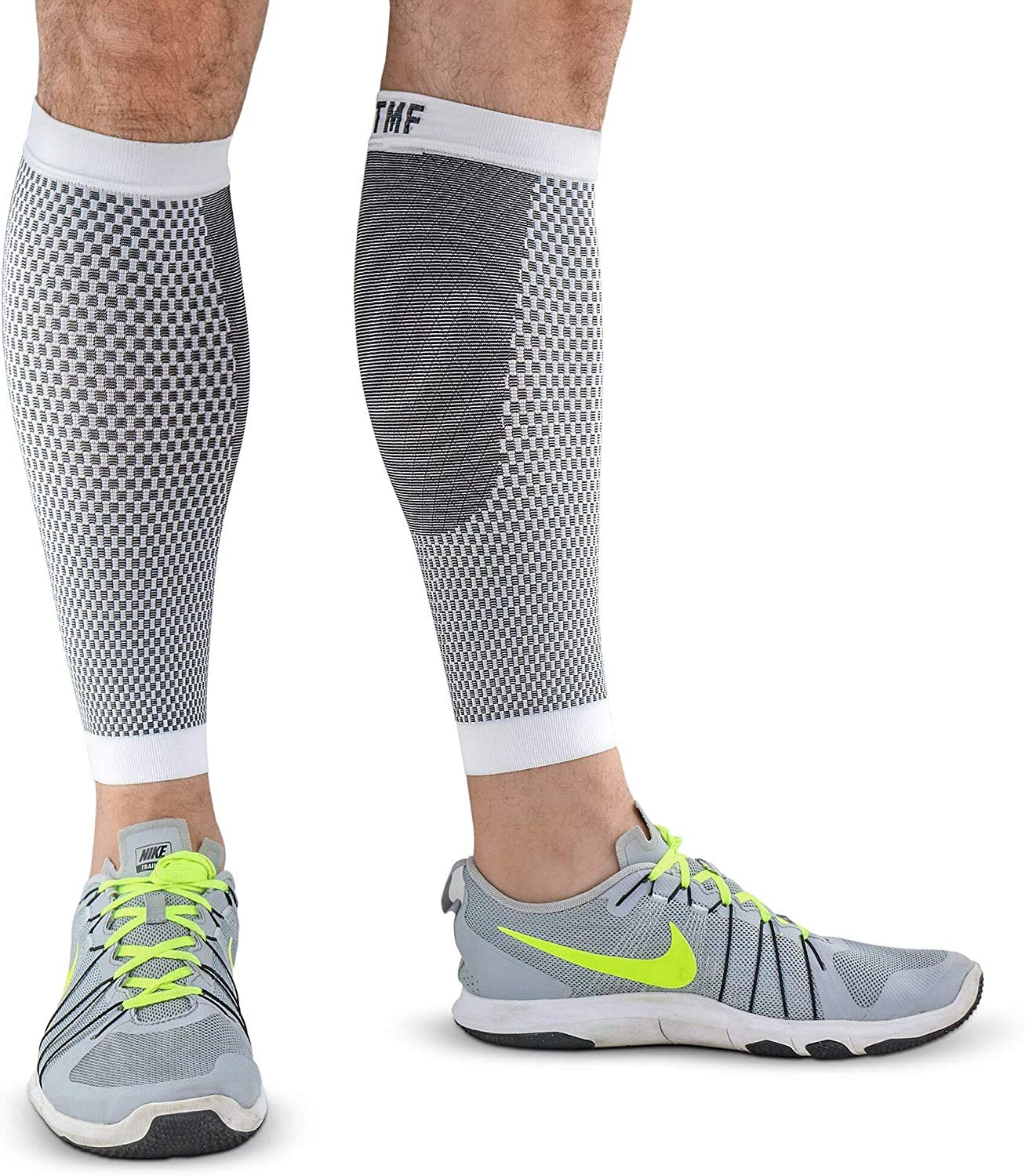Shin splints, a common plight for athletes and casual runners alike, can be a formidable barrier to achieving fitness goals. They involve pain along the shin bone (tibia) and often stem from increased physical activity or improper footwear. As one seeks relief from this vexing ailment, a myriad of remedies emerges, with calf compression sleeves gaining popularity. But do they truly deliver on their promises? Let’s delve into the efficacy of calf compression sleeves for alleviating shin splint discomfort.
The Anatomy of Shin Splints
To fathom how calf compression sleeves might aid in shin splint relief, one must first understand the underlying mechanics of the condition. Shin splints often manifest as a result of overuse, particularly when the muscles, tendons, and bone tissue become inflamed due to excessive stress. Factors such as running on hard surfaces, poor footwear, and inadequate stretching could exacerbate these symptoms. The pool of afflicted individuals ranges from hardcore runners to novice enthusiasts, all equally burdened by the knowledge that their athletic pursuits bring unwelcome pain.
Enter Calf Compression Sleeves
Calf compression sleeves are constructed from elastic materials designed to fit closely around the calf muscle. Their intention is twofold: to stimulate blood circulation and to provide support to the leg muscles. This is where the intrigue lies. Would a mere fabric sleeve prove to be an elixir for soothing aching shins? The question entices the curious mind. Advocates claim that these sleeves offer an array of benefits, not only targeting shin splint relief but enhancing overall performance as well.
Circulation and Muscle Support
The principle by which calf compression sleeves operate revolves around improved circulation. By applying consistent pressure to the calf muscles, they purportedly enhance venous return—promoting the efficient movement of blood back to the heart. Enhanced circulation can aid in the delivery of oxygen and nutrients to the muscles, fostering quicker recovery post-exertion and potentially reducing the likelihood of injury. Furthermore, the sleeves provide stability to the muscle group, supporting it in its recovery while diminishing the impact of jarring motions during activities.
Investigating the Evidence
Despite anecdotal accounts and passionate endorsements, scientific scrutiny remains essential in determining whether calf compression sleeves are, indeed, efficacious against shin splints. Numerous studies have explored this topic with varying outcomes. Some research indicates that wearing compression garments can lead to lower perceived muscle soreness and a reduction in muscle fatigue following physical activity. However, not all studies yield resounding support of their effectiveness specifically for shin splints.
Moreover, individuals often respond differently to compression therapy. What brings solace to one may leave another still grappling with discomfort. It’s vital to tailor one’s approach based on individual needs and responses, rather than following trends or popular recommendations blindly.
Comfort and Fit: Factors that Matter
When considering the implementation of calf compression sleeves, factors such as comfort and fit cannot be overstated. A sleeve that is too loose may provide minimal benefits, while one that’s overly constrictive can lead to discomfort and compromised circulation. Selecting the appropriate size and degree of compression is essential to maximizing the potential of these garments. Oftentimes, brands offer sizing charts based on calf circumference, aiming to ensure that users can find a suitable fit.
Additionally, material quality plays a significant role. High-quality, breathable fabrics that wick away moisture can enhance comfort and encourage extended wear. For individuals who engage in physical activity in warmer climates, this factor may prove particularly beneficial.
The Psychological Edge
Beyond the physical attributes, there’s a psychological dimension to wearing calf compression sleeves. Athletes and runners may find mental comfort in donning these sleeves, interpreting them as symbols of preparedness and professionalism. This psychological boost can enhance confidence, encouraging individuals to push through the pain barrier associated with shin splints. It’s fascinating how apparel can influence one’s mindset and performance, weaving an intricate tapestry that connects mental state with physical capabilities.
Alternative Remedies: A Holistic Approach
While calf compression sleeves can be a part of the arsenal against shin splints, they should not stand alone in this battle. Complementary remedies such as proper stretching, strength training, adjusting training routines, or even seeking professional advice from physiotherapists can create a more holistic strategy for prevention and relief. Ice therapy and rest also hold paramount importance in the recuperation process, allowing the inflamed tissues time to heal. Only a multifaceted approach stands a solid chance of overcoming the challenges posed by shin splints.
Final Thoughts
Ultimately, the efficacy of calf compression sleeves for shin splint relief elicits varied opinions. They hold promise, particularly when employed thoughtfully alongside other strategies. By promoting circulation, offering muscle support, and instilling a psychological edge, they can aid in the quest for relief. However, as with many solutions in the realm of health and fitness, individual experiences will dictate outcomes. Whether you’re a seasoned athlete or a beginner, being informed and proactive in addressing shin splints can pave the way for more enjoyable and sustainable physical activity. The journey to well-being is often laden with uncertainty, yet exploration and adaptation remain the keys to success.
